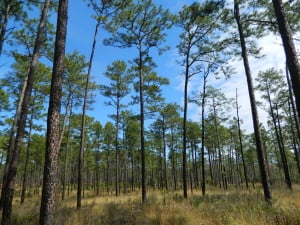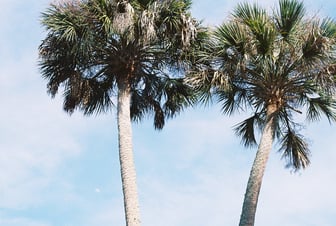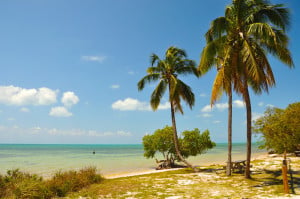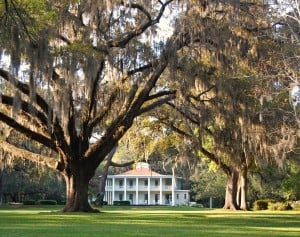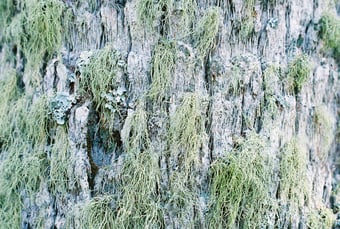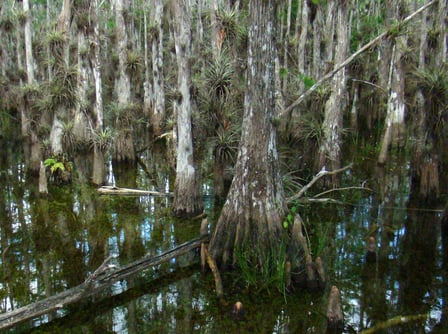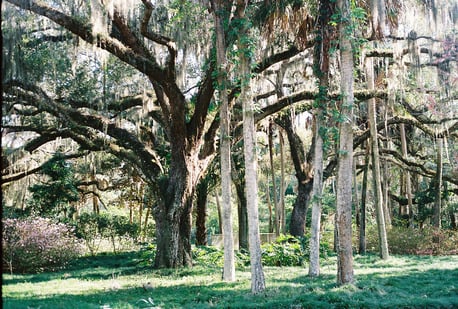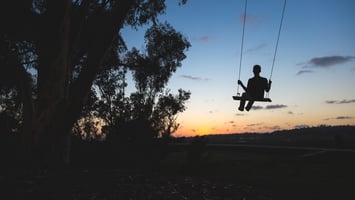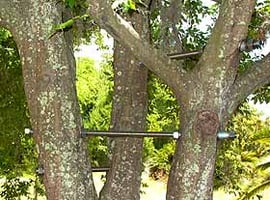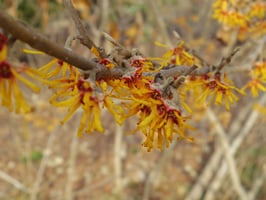Many adults have fond memories of tree swings, and today’s homeowners want to pass on these...
Traveling Trees: Florida Edition
Today’s post is not about planting trees nor has it anything to do with choosing us for your next removal. As a new feature of the blog we will periodically share our favorite trees and spots to see them when traveling The US!
We are not advertisers, nor travel bloggers, we are nature enthusiasts. Today we are kicking back and admiring the trees of FLORIDA.
First an elementary overview of the state:
Think of Florida as having 2 categories of natural communities, wetlands and highlands. Each of these categories has several more specific communities. The wetland areas contain the marshes and swamps. The highlands contain the Pine Flatwoods, dry prairie, scrub, and dunes. These areas have varying soils, water, nutrients and climate.
These natural communities contain some tree species that are also found in Missouri. But that’s not what we want to talk about today.
Here’s 4 types of trees you should admire while on your next visit to Florida:
-
Mangroves
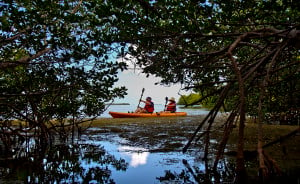
Big Pine Key, Florida:
Matt and Melissa Hagen of Pittsburgh, PA, paddle a kayak from Capt. Bill Keogh’s Big Pine Key Kayak Adventures, through the mangrove cover of No Name Key.
- Mangrove trees’ range in Florida consists of the Keys and about halfway up the coastline. These tough species are able to survive along shores, rivers and estuaries. They can also tolerate water that is salty enough to kill many other plants. The most distinctive feature of these plants are the aerial root systems that arch high out of the water. This special root system will stabilize the plant in otherwise loose soil and provide oxygen to the plant.
2. Pines
- Pines are a common fixture in Florida where there are 7 native species (compared to MO’s one, Shortleaf Pine). Each species grows best in a particular environment. Several are of commercial value and are cultivated and managed to provide products such as paper, packaging and lumber. Some species are managed to enhance wildlife habitat and/or to provide attractive landscapes. Of course, many pines grow naturally.¹
- We don’t see large stands of pine trees in the St. Louis area, so its a treat to see these.
BONUS: Florida also holds 7 National Champion Pine Trees! These means that among these 7 pine species, the largest of each species lives in Florida. (check out American Forests to learn more about champion trees and search for the Big Ones. )
3. Palms
- Of course, the Palm. Being native Missourians, we still don’t have much of a clue when it comes to palm trees. There are short ones, tall ones, bushy ones. The state holds a total of 11 species of Palms.
This publication by the University of Florida is helpful in identifying the Palms of Florida.
The last addition to this list is a not a group like the others, it is an important species.
4. Live Oak, Quercus virginiana
- These massive oaks are found mostly in the South. They are what many people picture (after palms) when they think about Florida trees, and they are usually draped in Spanish moss. They are considered one of the largest tree species east of the Rockies. Their crown can spread to roughly 150 feet! And while they appear to be evergreen, they are not. The old leaves drop right before the new leaves emerge.
ADDITION: This tree IS found in Missouri too, but no list of cool trees in Florida would be complete without:
5. Bald Cypress,Taxodium distichum
- The Bald Cypress grows all over the south east. Similarly to the Mangrove trees, the it has adapted special roots to be able to survive in wetlands. However, this tree will not survive in the same salty environments as the Mangrove. Its aerial roots are called pneumatophores, and they both help support the tree in loose soil and also allow oxygen to reach the tree.
Where to go?
Florida has a fantastic state park system. At about 161 parks, they are everywhere. Look them up before you go and you will likely find several you’ll want to visit. Also, if you are planning on visiting many state parks on your trip, consider purchasing a state parks pass. Many of the parks have entrance fees and those can add up to the cost of the pass! Many photos included in this blog are taken in the State Parks of Florida.
As we said at the beginning: this is not a travel blog. Or a “Visit Florida!” advertisement. We simply love exploring the outdoors and want to share some of our favorite sights! By no means have we seen it all, so comment below if you have more recommendations for a Florida Adventure.
¹http://edis.ifas.ufl.edu/pdffiles/fr/fr00300.pdf Common Pines of Florida

